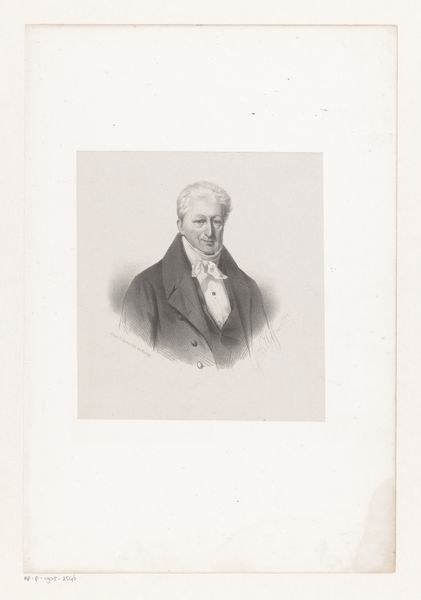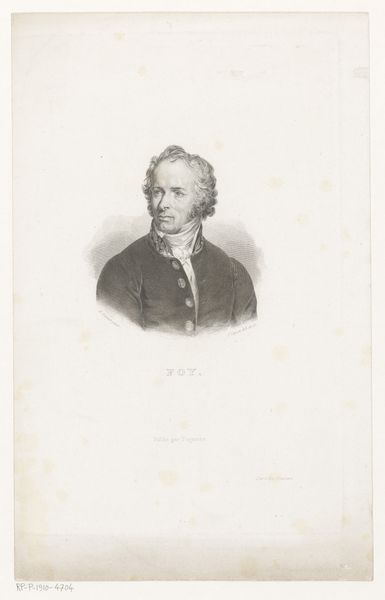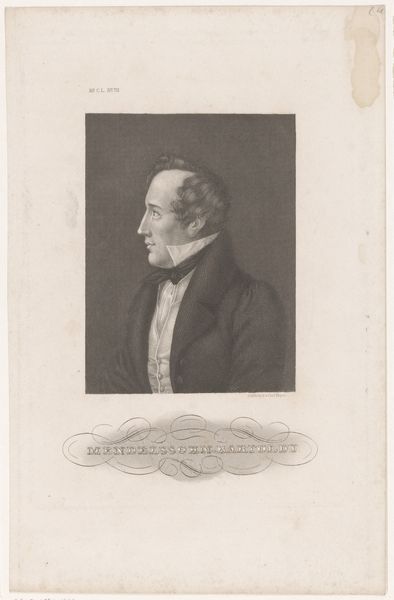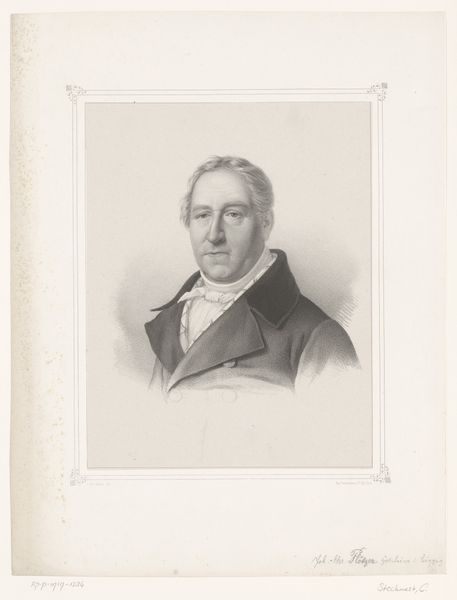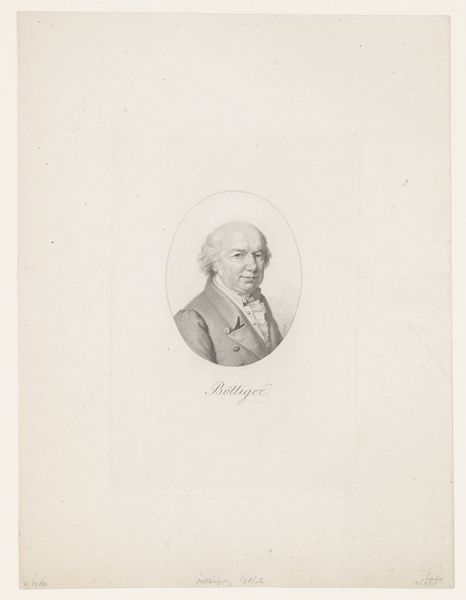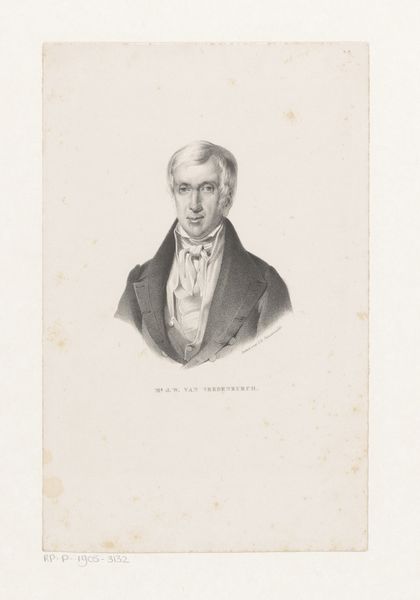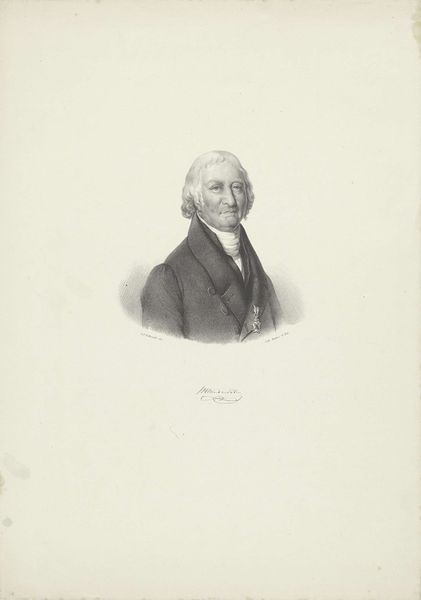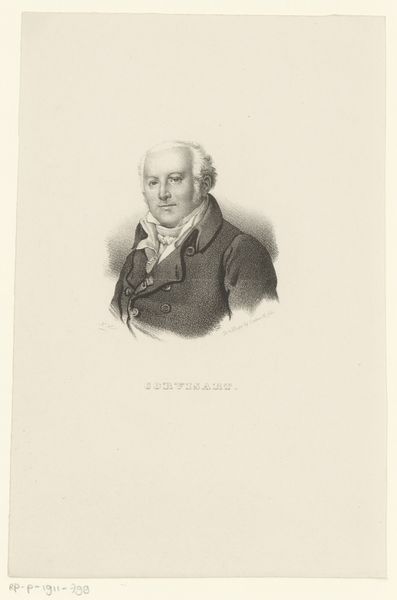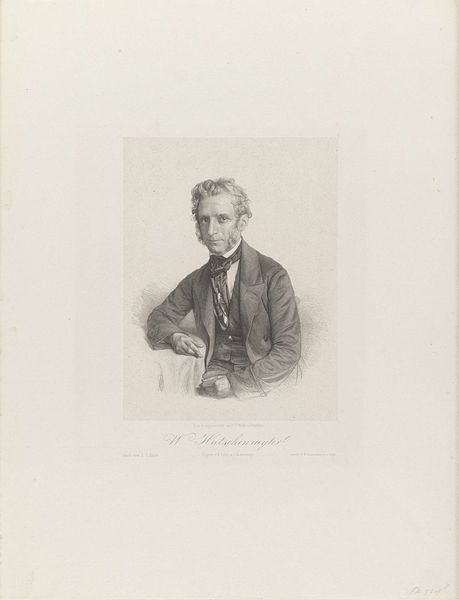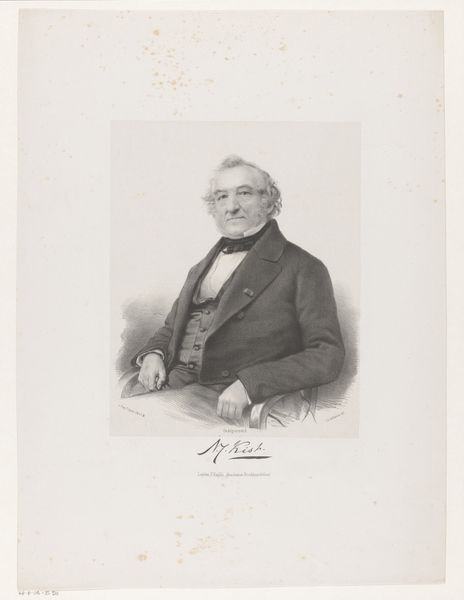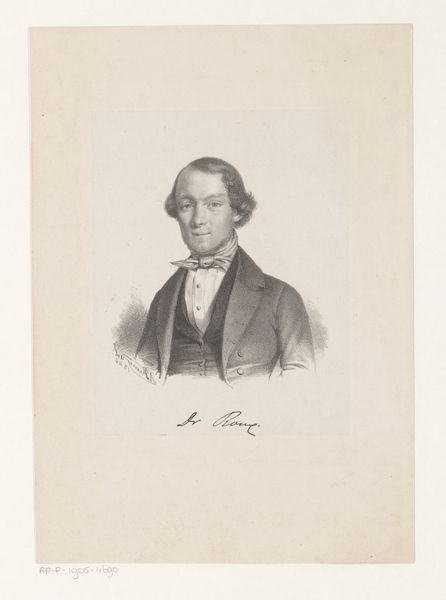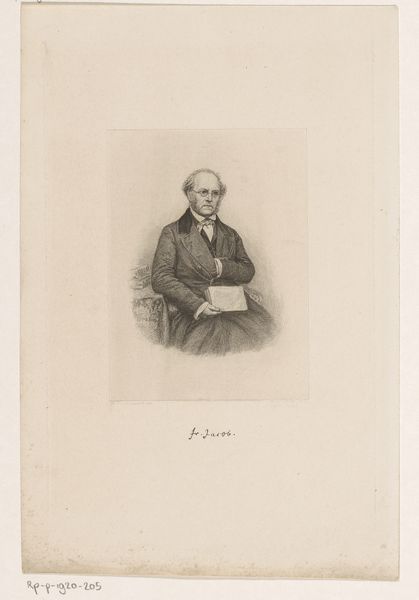
drawing, pencil
#
portrait
#
pencil drawn
#
drawing
#
light pencil work
#
pencil sketch
#
pencil
#
portrait drawing
#
academic-art
#
realism
Dimensions: height 566 mm, width 452 mm
Copyright: Rijks Museum: Open Domain
Curator: Here we have Joseph Schubert’s 1874 portrait of Michel Van Mons. The piece, rendered delicately in pencil, is currently held here at the Rijksmuseum. Editor: It's captivating, even in its restraint. There’s a vulnerability, almost a sadness, in the eyes that seems to reach beyond the academic pose. Curator: Note the exquisite layering of graphite. The artist’s skilled hand is evident in the precise delineation of form through subtle gradations of tone. Consider, too, the careful rendering of textures, from the soft waves of the hair to the smoother surfaces of his suit. Editor: Indeed. And the symbolic language is potent, isn't it? He is clutching a hat while his hand is tucked behind his back. One can infer hidden intellectual depths; perhaps even a hint of the weight of knowledge or societal expectations pressing upon him. Curator: Observe how the artist skillfully employs chiaroscuro, which molds the subject's features. The controlled tonal range not only defines the volume of the head but also highlights the inherent geometric structures underlying it. Editor: Precisely. That strategic play of light also underscores the inherent tension between the outward persona he projects and an inner state we can only imagine. The subdued palette, a study in greyscale, furthers this quiet introspection. Curator: Also interesting to note is the minimal background detail which reinforces the importance of the human subject within the oval format. There is also a masterful treatment of negative space that enhances the composition as a whole. Editor: One wonders about his relationship to his time period. His slightly old fashioned attire may signify certain social expectations, especially in the bourgeois. I see the portrait serving as a kind of mirror, reflecting not just a likeness, but also societal values of that era. Curator: Indeed. It's an exemplary study in portraiture—the relationship between medium, mark, and the modulation of light. Editor: Yes, ultimately, the emotional and psychological portrait lingers long after we’ve considered its formal elements. Thanks for lending me your insights into the piece!
Comments
No comments
Be the first to comment and join the conversation on the ultimate creative platform.
